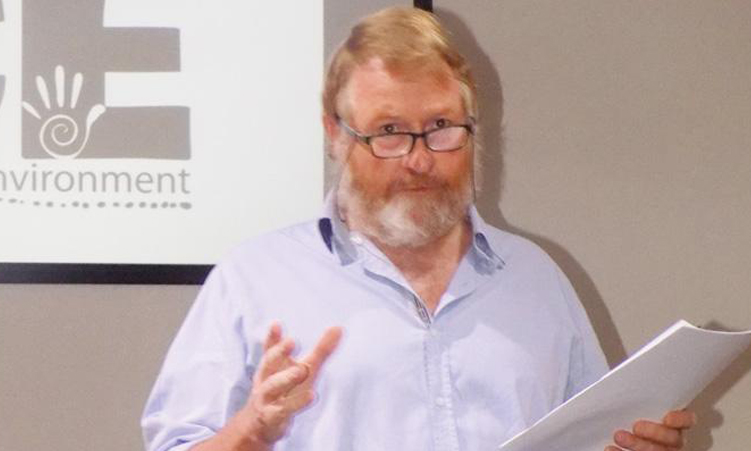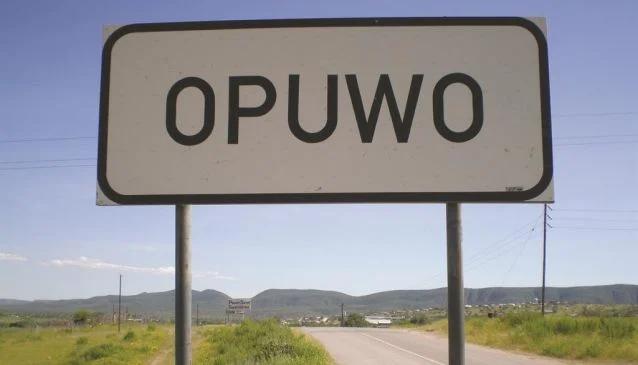The Namibian Chamber of Environment (NCE) has warned the government against culling desert elephants.
The state is slaughtering over 700 animals to cushion some Namibians against hunger caused by the worst drought in the country in 100 years.
These animals include 30 hippos, 60 buffaloes, 50 impalas, 100 blue wildebeest, 300 zebras, 83 elephants and 100 eland.
NCE chief executive Chris Brown has called on the government to spare the elephants in the country’s dry north-west.
“A potential concern that needs to be considered here is that the so-called ‘desert-adapted elephants’ should not be harvested, cropped or hunted.
“They are few in number and have far greater value for tourism than for their meat. Also, these few animals have important ecological functions in this area,” he says.
Brown says the “arid-adapted” elephants are an important national asset that must be protected.
“To live in these arid and hyper-arid areas requires more than just normal animal instinct. It requires long memories and detailed local knowledge of where to find food and water under the most difficult conditions and during the worst droughts.
“If this local knowledge is lost because older animals in the population are removed it cannot be replaced by new elephants entering the area,” Brown says.

POPULATION CONTROL
Responding to Brown, minister of environment, forestry and tourism Pohamba Shifeta says the culling programme is necessary to control overpopulation and mitigate the effects of drought, which threatens both wildlife and human communities.
“This is what we do in Namibia – we have been doing this for years as part of our conservation,” he says.
Shifeta says the ministry culls to control the overgrazing and overpopulation, saving many animals from the drought.
“The number we are culling is not even 1% of our wild animals’ total population. Other people can talk because 700 to them is a lot,” he says.
“When we had drought in 2018 and 2019 we made a mistake by not culling enough, leading to the death of close to 5 000 animals. This year the drought is severe,” he says.
Shifeta says the culling programme is not carried out to feed people only, but also to reduce the population and prevent human-wildlife conflict.
“We are targeting elephants that are troubling the communities and which are over the reproductive age,” he says.
Shifeta is confident that the population will recover in the next few years.
“The constitution mandates us to conserve and make sure the ecosystem benefits the current and the future generations,” he says.
Shifeta says the ministry will be assisted by hunters to cull and to help with storage.

DECLINING NUMBERS
Brown says some wild animal populations have declined because of the drought and farmers removing animals for rangeland management purposes.
“We can assume the wildlife population across the country is now closer to about 2,5 million head.
“Over 80% of this wildlife is outside national parks on communal and freehold land,” he says.
Brown says Namibia has excellent policies to incentivise the national wildlife economy, making it a more competitive form of land use than conventional farming.
“Put simply, farmers make more money from wildlife than they do from domestic stock. Every year, farmers harvest at least 15% of their wildlife for the meat and trophy trade. This amounts to about 300 000 animals per year,” he says.
Brown says it might take longer for the animal population to recover.
“The 730 animals the government proposes to harvest is a very small number – only about 0,03% of the national wildlife herd. Given that most wildlife species breed at an annual rate of about 25%, populations will recover very quickly.
“The meat from these animals will be given to people in need. With our unemployment rate of about 40% combined with the drought and failed crops, this is considered a very appropriate plan of action,” he says.
Brown says Namibia has an elephant population of over 24 000 animals – up from about 7 500 at independence.
“These animals have not only increased in the areas they occurred in in 1990, but have also expanded their range to new areas. In some of these new areas, people are not used to living with elephants and feel very threatened.
“They are also experiencing crop losses, infrastructure damage to water installations and fear for their safety,” he says.
He says elephants involved in human-wildlife conflict only make up 0,2% of the population.

DROUGHT-RELIEF
Environment ministry spokesperson Romeo Muyunda says the decision to slaughter animals supports the government’s drought-relief initiative.
“The animals are sourced from national parks and communal areas with sustainable game numbers,” he says.
The parks include Namib Naukluft Park, Mangetti National Park, Bwabwata National Park, Mudumu National Park and Nkasa Rupara National Park, Muyunda says.
“With the severe drought situation in the country, conflict is expected to increase if no intervention is made,” he says.
“In light of this, 83 elephants from conflict areas will be killed and the meat from their carcasses will be donated to the Office of the Prime Minister’s drought-relief initiative,” Muyunda says.
“The culling is being conducted by professional hunters and Safari Outfitters contracted by the ministry and conservancies in specific areas,” he says.
Muyunda says to date, 157 animals of different species have been hunted in the Mangetti National Park, 20 in Mahango, 70 in Kwando, six in Bufallo and nine in Mudumo, delivering 56 875kg of meat.
“An arrangement has been made with the Office of the Prime Minister and Meatco for the ministry to provide game meat for the drought-relief programme,” he says.
He says this offtake will help mitigate the negative impact of drought on wildlife conservation in both our national parks and communal areas.
“There is no doubt that drought is affecting most sectors, including conservation,” he says.
“By reducing wildlife numbers in certain parks and communal areas where we believe the population exceeds the available grazing and water resources, we can better manage the current grazing pressure and water availability,” Muyunda says.
Stay informed with The Namibian – your source for credible journalism. Get in-depth reporting and opinions for
only N$85 a month. Invest in journalism, invest in democracy –
Subscribe Now!










